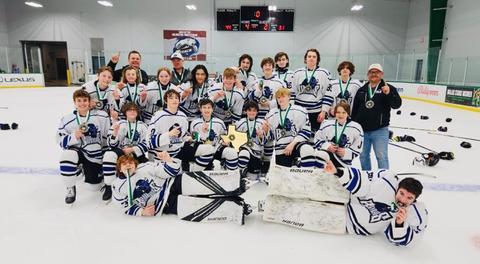How the Dallas Stars Have Transformed Youth Hockey in Texas: Influence, Challenges, and Future Prospects
The Dallas StarsŌĆÖ Pivotal Role in Shaping Texas Youth Hockey
Over the last ten years, the Dallas Stars have become a central force in the development of youth hockey throughout Texas, fundamentally altering the sportŌĆÖs grassroots environment. Through strategic alliances, substantial funding, and exclusive training opportunities, the organization has constructed a robust framework that is difficult for other groups to rival. By blending professional-grade resources with community engagement, the Stars provide young players with unparalleled access to elite coaching and top-tier facilities. This approach has not only ignited widespread enthusiasm for hockey but also concentrated emerging talent under the StarsŌĆÖ umbrella.
Several key elements have enabled this dominant position:
- Control over premier ice facilities: The Stars have secured long-term agreements for the stateŌĆÖs most sought-after rinks, limiting availability for independent leagues.
- Structured player development: Their comprehensive programs, including skill camps, travel teams, and mentorship linked to the StarsŌĆÖ scouting, encourage early and sustained player commitment.
- Financial backing: By subsidizing equipment and tournament fees, the Stars create barriers for smaller clubs attempting to compete on equal terms.
| Year | Youth Hockey Enrollment | Percentage in Stars-Affiliated Programs | Percentage in Independent Clubs |
|---|---|---|---|
| 2015 | 4,500 | 35% | 65% |
| 2020 | 7,800 | 58% | 42% |
| 2023 | 10,200 | 73% | 27% |
This consolidation has made the Dallas Stars synonymous with youth hockey excellence in Texas, but it has also raised concerns about the reduction of competitive diversity and equitable access. While many applaud the franchise for elevating hockeyŌĆÖs profile statewide, others worry that this concentrated control may hinder the growth of alternative programs and limit opportunities for players outside the StarsŌĆÖ network. As Texas hockey continues to expand rapidly, the long-term consequences of this dominance remain uncertain.
Challenges Faced by Independent Clubs Amidst the StarsŌĆÖ Ascendancy
The overwhelming presence of the Dallas Stars in Texas youth hockey has created significant hurdles for local clubs striving to maintain independence and competitiveness. Numerous smaller organizations report dwindling player registrations and financial constraints as the StarsŌĆÖ brand attracts the majority of promising athletes. This monopolistic environment has led to a standardization of training methodologies, reducing the variety of coaching styles that once enriched the stateŌĆÖs hockey culture. As one veteran coach remarked, ŌĆ£Competing feels like playing a game where one team sets all the rules.ŌĆØ
Resource competition has intensified, with local teams struggling to secure ice time and sponsorships, which are frequently funneled toward Stars-affiliated programs. The disparity is evident in the following comparison of ice availability and funding:
| Club Category | Average Weekly Ice Time | Annual Sponsorship Funding | Registered Players |
|---|---|---|---|
| Stars-Affiliated Clubs | 12 hours | $200,000 | 450 |
| Independent Local Clubs | 6 hours | $50,000 | 200 |
- Unequal resource distribution heavily favors Stars programs, creating an uneven competitive environment.
- Talent recruitment is predominantly channeled through the StarsŌĆÖ system, limiting options for other clubs.
- Community allegiance often leans toward the prestige and perceived quality of Stars-affiliated teams.
Financial Strength and Resource Control: The Backbone of the StarsŌĆÖ Monopoly
With a substantial financial foundation and access to premium resources, the Dallas Stars have outpaced their rivals, embedding themselves deeply within Texas youth hockey. Their investment in cutting-edge training centers and a highly qualified coaching staff has created an attractive environment for young players and their families. The organizationŌĆÖs strategic funding ensures continuous program improvements, drawing elite talent from across the region. This financial prowess enables the Stars to offer scholarships, host elite camps, and maintain year-round ice availabilityŌĆöadvantages that smaller clubs find difficult to replicate.
- Exclusive partnerships with top-tier rinks securing prime ice time
- Customized development programs designed for different age groups and skill levels
- Comprehensive marketing and outreach targeting schools and community organizations
- Financial stability allowing for long-term strategic planning without budget interruptions
| Resource | Dallas StarsŌĆÖ Assets | CompetitorsŌĆÖ Resources |
|---|---|---|
| Training Facilities | 3 NHL-standard arenas | 1 community rink |
| Coaching Personnel | 12 full-time professional coaches | 5 part-time coaches |
| Annual Operating Budget | $5.2 million | Less than $1 million |
These financial and infrastructural advantages not only secure the StarsŌĆÖ dominance on the ice but also perpetuate a cycle of growth and influence. Families and athletes are drawn to the professionalism and reliability of the StarsŌĆÖ programs, further consolidating their control over the talent pipeline. As smaller clubs grapple with limited resources, the Stars have effectively molded the youth hockey scene into a near-monopoly, restricting competition and centralizing authority across Texas.
Fostering Inclusivity and Competitive Equity in Texas Youth Hockey
Addressing the monopolistic dominance of the Dallas Stars requires deliberate efforts to enhance accessibility and promote diversity within youth hockey. Community stakeholders should prioritize affordable programming that lowers financial barriers, such as subsidized equipment rentals and income-based fee structures. Collaborations with local schools and community centers can expand outreach, introducing hockey to children from varied socioeconomic and cultural backgrounds. Mentorship programs pairing experienced players from diverse demographics with newcomers can cultivate an inclusive atmosphere where all participants feel welcome.
- Establish Scholarship Funds: Providing financial support to underrepresented youth to encourage participation
- Develop Community-Based Teams: Creating local clubs to decentralize control and empower grassroots hockey
- Implement Inclusive Coaching Education: Training coaches in cultural competency and equity principles
- Promote Facility Sharing: Encouraging cooperative use of local rinks to maximize community involvement
Ensuring competitive balance is equally vital to sustaining enthusiasm and growth in the sport. Rotating leadership roles among diverse stakeholders and adopting transparent governance structures can prevent monopolistic tendencies. Clear, objective criteria for league participation and advancement help level the playing field. The following table highlights successful youth hockey initiatives from other regions that have enhanced diversity and competitive fairness:
| Initiative | Region | Results |
|---|---|---|
| Diversity Scholarship Programs | New England | 20% increase in minority participation |
| Community Leadership Councils | Midwest | Improved parity among teams in local leagues |
| Equity-Focused Coaching Clinics | Pacific Northwest | Higher retention rates of underrepresented players |
Looking Ahead: The Future of Youth Hockey in Texas
As the Dallas Stars continue to expand their influence over youth hockey in Texas, the conversation around competitive fairness and accessibility intensifies. Their unprecedented control has undeniably propelled the sportŌĆÖs growth and visibility, yet it also raises critical questions about the long-term impact on diversity and opportunity. Stakeholders, including parents, coaches, and community leaders, will be closely monitoring how this dominance evolvesŌĆöwhether it will inspire broader participation or further concentrate power in ways that limit the sportŌĆÖs inclusivity. The ongoing dynamics between the Stars and the wider Texas hockey community mark a defining moment for the future trajectory of hockey development in the region.





